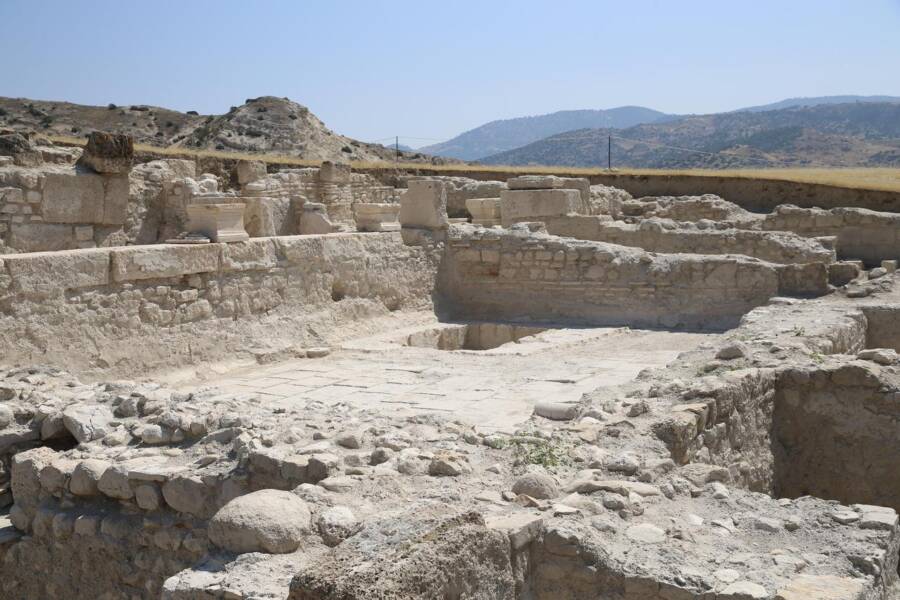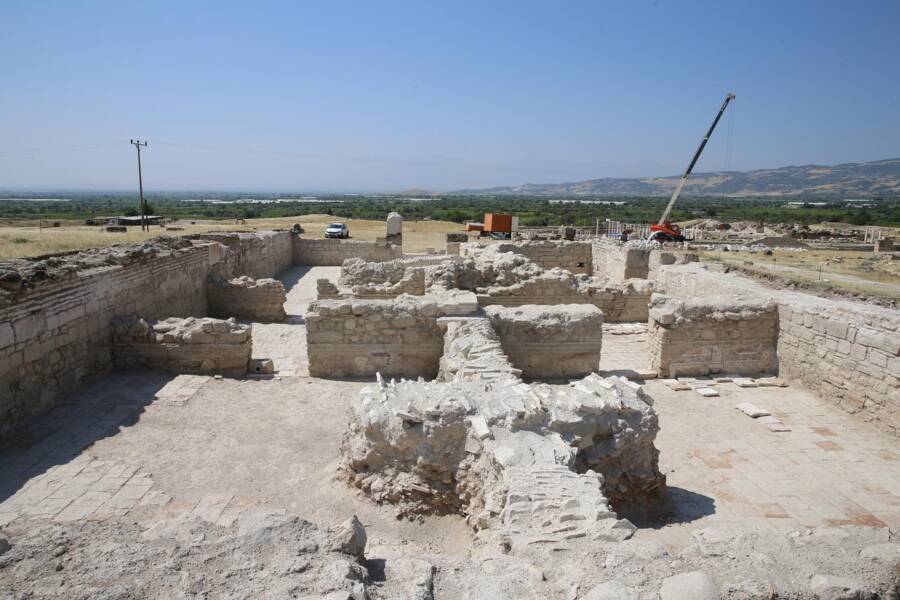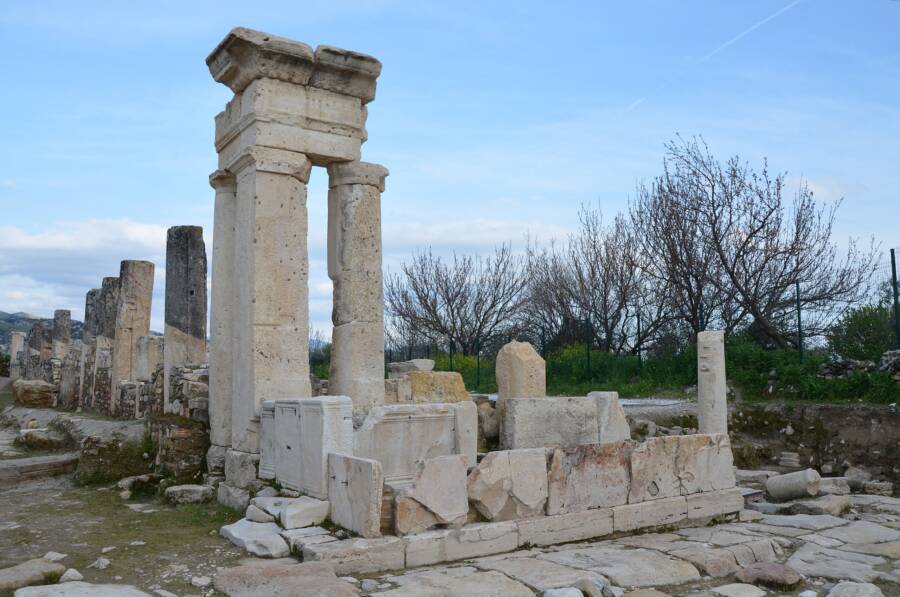The Roman villa in the ancient city of Tripolis, Turkey, contained a large fish pond where carp, catfish, and eels were likely raised.

Anadolu AgencyThe elaborate villa included a pond that once held fish used to feed distinguished guests.
Over the years, archaeologists excavating the ancient city of Tripolis in present-day Turkey have unearthed a number of astounding Roman- and Byzantine-era ruins. Most recently, they’ve uncovered the remains of an elaborate Roman villa with a curious feature: a fish pond.
The fish in the pond were not seen as entertainment or appreciated for their beauty. Rather, archaeologists believe that the owner of the Roman villa would have used them as a fresh meal for distinguished guests.
The Roman Fish Pond In Tripolis
According to reporting from Türkiye Today, excavations in Tripolis, near the modern town of Buldan, have yielded a number of impressive finds. Among the well-preserved ruins, archaeologists have uncovered a 1,500-year-old church, a 2,000-year-old villa with 12 rooms and mosaic floors, and 1,700-year-old frescoes. Their latest find was a sprawling 16,000-square-foot villa complete with frescoes and a fish pond.

Anadolu AgencyThe remains of the ancient Roman villa in Tripolis.
Archaeologists found the 430-square-foot fish pond at the villa’s southern entrance, just past a 60-foot-long row of columns. The pool is made of marble, adorned with fish figures, and designed with alcoves where the fish could hide or escape from the sun.
“This is, in fact, a fish pool,” archaeologist Bahadir Duman of Pamukkale University, who has overseen the excavations in Tripolis for the past 13 years, remarked. “Its inner walls are fitted with terracotta pipes — some open, some closed — forming tiny shelters to protect the fish from direct sunlight and provide safe hiding spaces.”
While fish ponds today are mostly for aesthetics, archaeologists believe that the pond in Tripolis had a practical purpose. The carp, catfish, and eels who likely lived inside were not merely decoration — they were part of the menu. During extravagant dinner parties, they would have been served to the villa’s guests.
And while the Romans certainly fished off the coast, the presence of a fish pond in an individual villa is unique. The pond hints at the prosperity of the home’s owner, who also decorated their home with “vibrant frescoes… [with] botanical motifs and architectural embellishments.”
The Ancient History Of Tripolis
The history of Tripolis began back in the fourth millennium B.C.E. Archaeologists have found evidence of settlements from that time, but the first known mention of Tripolis didn’t come until the first century C.E. Then, it was described as a Lydian town by the Roman writer Pliny the Elder.

Carole Raddato/Wikimedia CommonsRuins in Tripolis, an ancient town that was first settled around the fourth millennium B.C.E.
Over the centuries, Tripolis was also known as Neapolis and Apollonia. After Mark Antony visited the settlement in 41 B.C.E., it was also briefly called Antoninopolis. After Antony’s death and the rise of Augustus, however, the town became more widely known as Tripolis.
The city flourished during Roman times, especially after the second century C.E., which saw the construction of public buildings, city gates, baths, streets, arenas, and theaters. However, Tripolis was partially destroyed by an earthquake in 494 C.E. People began to leave the city, a trend that continued following Persian invasions in the sixth and seventh centuries.
As such, the Roman villa unearthed in Tripolis and its accompanying fish pond are a small piece of the settlement’s much larger history. They also tell a fascinating story about the kind of people who once lived in the settlement, people prosperous enough to own a massive villa and feed their guests fish caught fresh from their very own marble pond.
After reading about the Roman villa with a fish pond found in Turkey, discover the stories of some of the worst, most violent, and most depraved Roman emperors. Or, learn about the Pax Romana period of Roman history, an era of peace and prosperity that lasted from 27 B.C.E. to 180 C.E.





